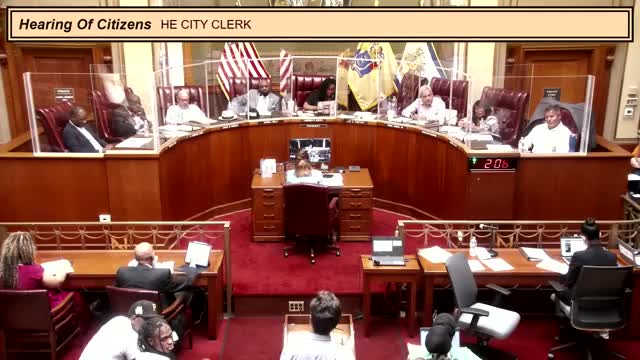Newark plans massive housing project amid zoning controversy
August 13, 2024 | Newark, Essex County, New Jersey
This article was created by AI summarizing key points discussed. AI makes mistakes, so for full details and context, please refer to the video of the full meeting. Please report any errors so we can fix them. Report an error »

During a recent government meeting, significant discussions emerged regarding a proposed development project in Newark that aims to construct several 30-story buildings in an area currently zoned for structures between five and twelve stories. This proposal has raised concerns about its potential impact on neighborhoods that are already struggling to accommodate population changes.
City officials highlighted that the neighborhoods most affected by population loss, particularly in Newark's Central Ward, are also the areas that have seen the least investment. These neighborhoods, which have lost approximately 100,000 residents since the 1950s, are viewed as the most suitable locations for new affordable housing developments. The meeting underscored the importance of directing city infrastructure improvements—such as police, fire services, utilities, and education—toward these under-resourced areas to ensure equitable growth across the city.
Critics of the proposed project argue that it represents a form of \"spot zoning,\" which would allow a single developer to bypass established zoning regulations for a specific lot. This approach could undermine the city's broader goal of distributing new construction equitably across all five wards, rather than concentrating development in one area, particularly downtown.
The discussions reflect a growing emphasis on balancing development with the needs of Newark's diverse communities, particularly in light of historical population shifts and ongoing challenges in service provision. The outcome of this proposal could have lasting implications for the city's approach to urban planning and community development.
City officials highlighted that the neighborhoods most affected by population loss, particularly in Newark's Central Ward, are also the areas that have seen the least investment. These neighborhoods, which have lost approximately 100,000 residents since the 1950s, are viewed as the most suitable locations for new affordable housing developments. The meeting underscored the importance of directing city infrastructure improvements—such as police, fire services, utilities, and education—toward these under-resourced areas to ensure equitable growth across the city.
Critics of the proposed project argue that it represents a form of \"spot zoning,\" which would allow a single developer to bypass established zoning regulations for a specific lot. This approach could undermine the city's broader goal of distributing new construction equitably across all five wards, rather than concentrating development in one area, particularly downtown.
The discussions reflect a growing emphasis on balancing development with the needs of Newark's diverse communities, particularly in light of historical population shifts and ongoing challenges in service provision. The outcome of this proposal could have lasting implications for the city's approach to urban planning and community development.
View full meeting
This article is based on a recent meeting—watch the full video and explore the complete transcript for deeper insights into the discussion.
View full meeting
